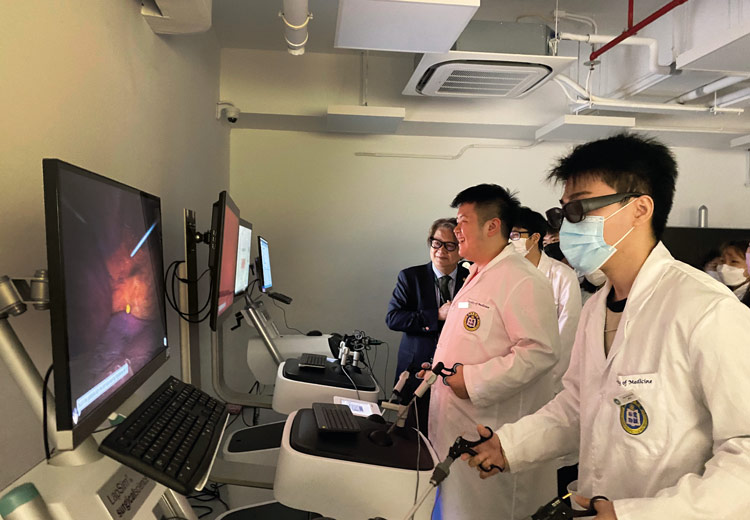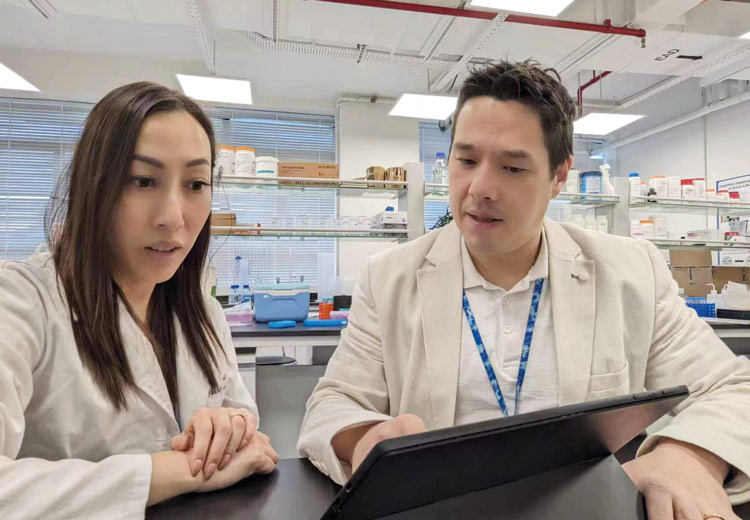Training the doctors of tomorrow using interdisciplinary research

Sponsored by

Sponsored by

The Medical Sciences Division at Macau University of Science and Technology is the first and only centre in the region to offer a certified vocational programme for medics and associated professions. Now it’s gaining a reputation for innovation and research
Founded in 2000, Macau University of Science and Technology (MUST) has always taken an interdisciplinary approach to teaching and research.
Despite being a relatively young university, it has expanded rapidly in the past two decades, now ranking among the top 20 universities in Greater China. It was established soon after Macao was returned to Chinese sovereignty in 1999, having been a Portuguese colony for centuries before.
The university’s founders wanted to develop a curriculum that would support Macao’s growth while boosting science and technological innovation in China and beyond.
The Faculty of Chinese Medicine, a traditional medical system that embraces unique theories and treatment methods, was established as one of the four founding faculties of the new university. Despite being an ancient practice, Chinese medicine forms a key part of Macao’s five-year development plan.
In 2011, MUST established the first state key laboratory in the field of Chinese medicine. Health science education expanded with the introduction of new programmes in public health, nursing, pharmacy and food and nutrition.
The Faculty of Medicine is the youngest faculty at the university, founded in 2019 when the university launched Macao’s first and only bachelor’s programmes in medicine and surgery. This makes MUST the only institution in the region that’s certified to train the doctors of the future.
The programme’s curriculum focuses on real-world competencies and applications, using teaching approaches that help students to solve problems with their clinical knowledge. It is a six-year course, comprising five years of integrated courses and clinical attachments and a one-year internship.
“At MUST, we have a unique integration of Eastern and Western medicines, using innovative technology as a bridge,” says vice-president Paul Kwong Hang Tam. As a result of its unique position, the university made the strategic decision to establish the Medical Sciences Division (MSD) to bring all its medical science interests under one umbrella to increase their collective impact.
“There is synergy and potential, with cutting-edge technology bringing all these disciplines together. Universities are all trying to contribute to areas of strategic importance and health, not just in Macao but in the Greater Bay Area,” Tam says.
This is not the first time MUST has brought together disciplines to enhance outcomes. It has already built a new Faculty of Innovation Engineering (FIE), which brings together a number of research clusters, including computer science and mathematics, into a single unified structure that collaborates with other disciplines such as space science and environmental science.
“We believe the FIE and MSD will become the powerful twin engines of strategic development and growth in science and technology for the university,” Tam says. “They will act as a new platform to ensure education and research is translated into successful outcomes for clinical practice and industry.”
As a private, non-profit university, MUST can take an agile approach to research and development, and has already achieved an impressive record of journal citations and invested significantly in lab facilities.
The output of patents originating at MUST has increased several times since it was established, and the university owns five partner research bases with key research institutes of China’s Ministry of Education, as well as two state key laboratories. Internationally, the university has established cooperation with more than 100 research institutes around the world.

The focus is now on boosting MUST’s reputation as a leader in several strategic areas, including medical science and interdisciplinary research. “Macao has not been famous in the past for medical science, but I think that will change,” says Yi Zhun Zhu, chair professor of pharmacology and director of the School of Pharmacy at MUST.
Because this is one of the most densely populated regions in China, innovation in medical science and the translation of these innovations is crucial for advancing public health, he says: “We just submitted a first-in-class drug for clinical approval by China FDA. We are working hard to ensure that more research is translated into real-world outcomes. Governments and universities want to see products beyond the research papers.”
Having an agile structure supports these ambitions. “Our strategic reorganisation means we have a smart management system that’s not the same as some public universities. We can bypass a lot of bureaucracy to achieve a management structure that’s fit for purpose,” Tam says.
Both front-line staff and researchers benefit from structures that allow them to develop their own research interests at speed and leverage the university’s investment in technology.
"Being interdisciplinary is at the soul of the university"
Paul Kwong Hang Tam, vice-president of Macau University of Science and Technology
Further interdisciplinary connections are in the pipeline, with plans to establish an institute for the use of artificial intelligence in medicine – something Tam describes as “one of the hottest and most important areas of health and engineering”.
The institute would look at how AI can be applied to drug discovery as well as growing areas such as regenerative medicine. “We are establishing a clinical trial centre to enable us to translate lab discoveries into clinical practice and help the industry to set standards and benchmark against both international standards and those in the Bay Area,” Tam says.
In addition, MUST competes for local research grants and mainland funding, and has built ties with industry to increase investment in labs and technology to support research and the application of its discoveries.
“The platforms and innovation labs we provide offer exciting opportunities for development with industry,” Tam explains. “The nature of governance at MUST means we are amenable to developments, led by experienced people who see opportunities in a growth area.”
This extends to how the Medical Sciences Division attracts and retains talented researchers and academics, with a number of top global scholars choosing to base themselves there. “We want to give them that platform to express themselves,” Tam says. “But, at the same time, we’re seeing many Macao founders returning from overseas to work with us, and we need to deliver on our promises.”
While rankings will help MUST expand its reputation and attract talent across many research areas, this is not the university’s main focus. “Being interdisciplinary is at the soul of the university and, as we develop and improve, it’s not just about how we perform in the rankings, but how they fit in with our strategic goals,” Tam says.
Find out more about the Medical Sciences Division at Macau University of Science and Technology.